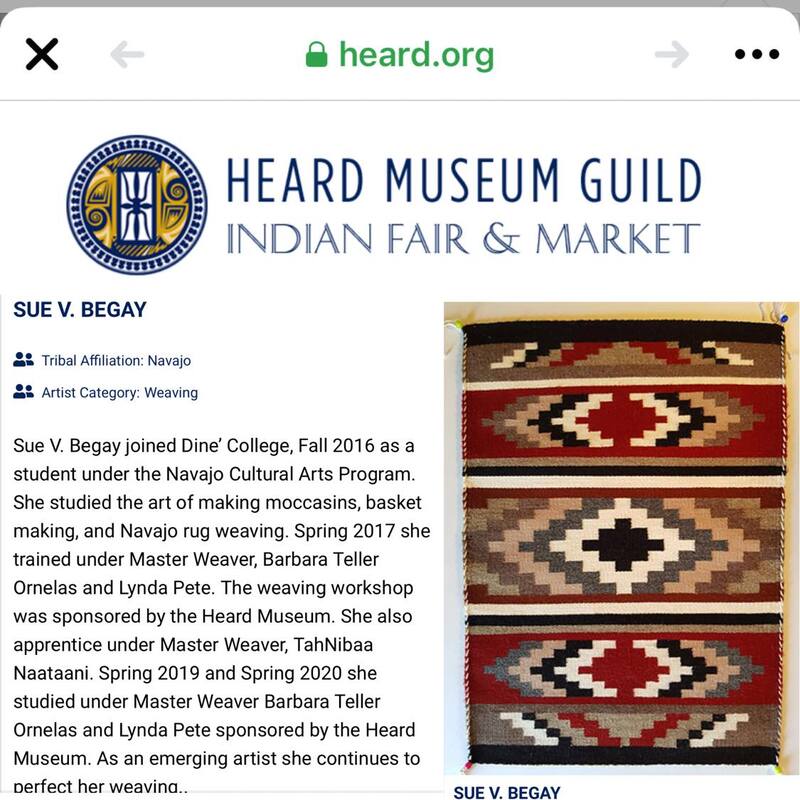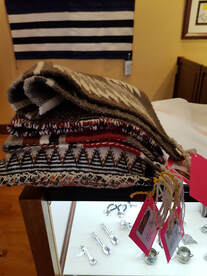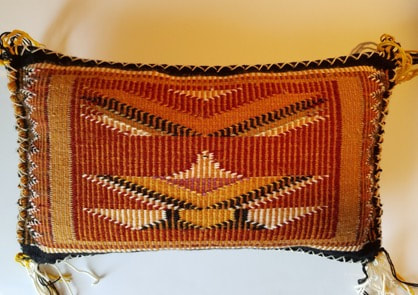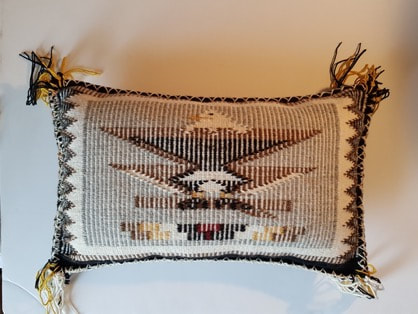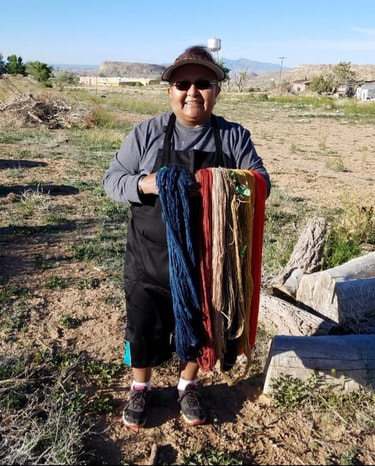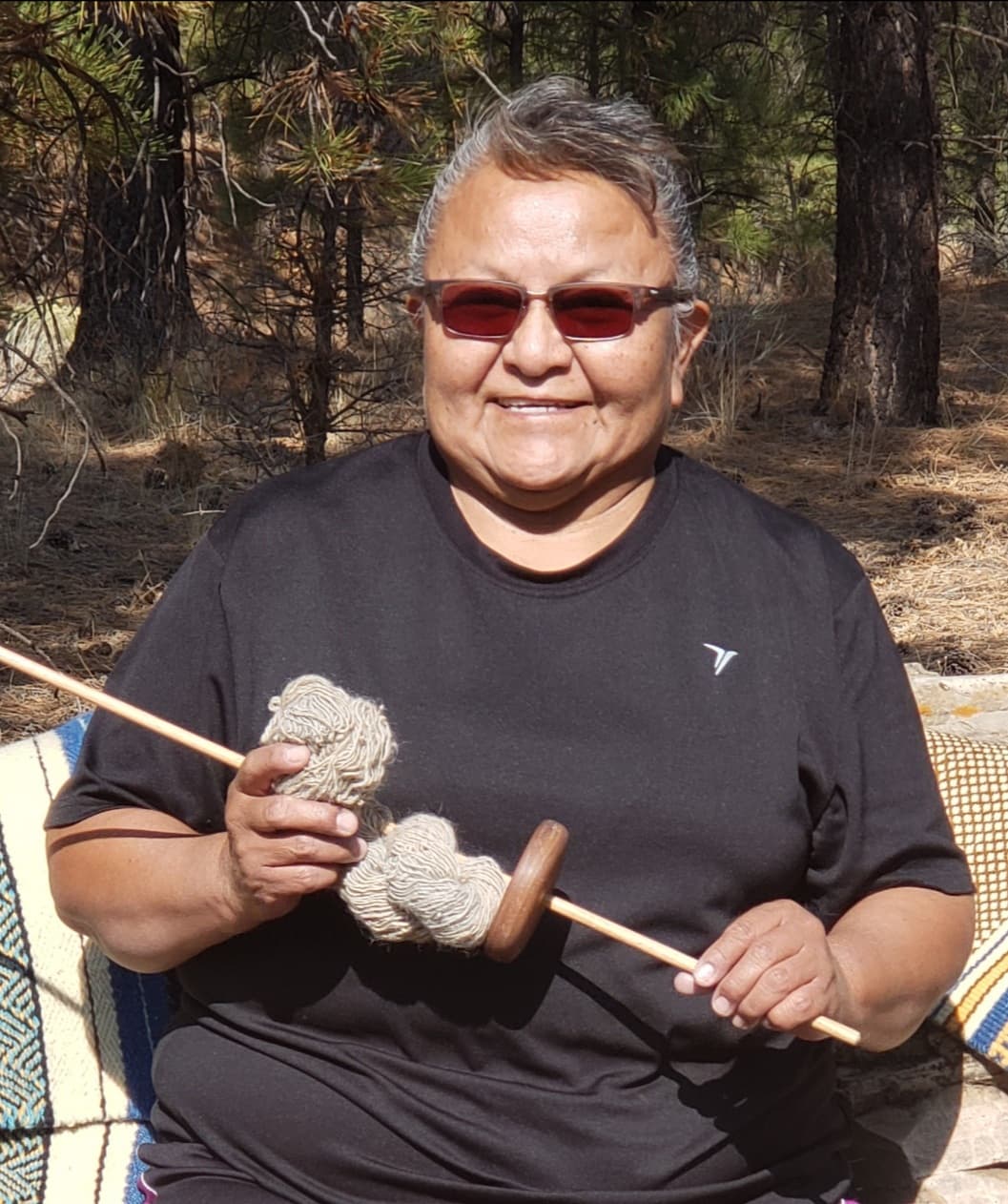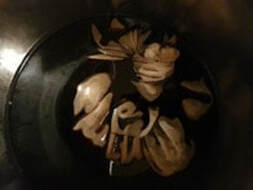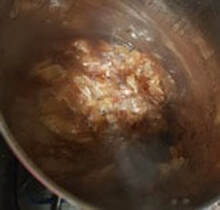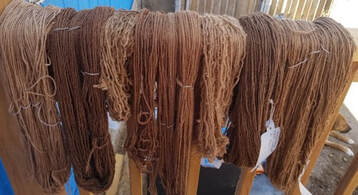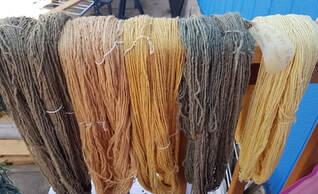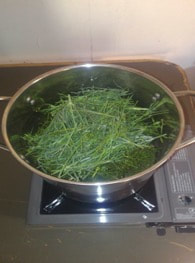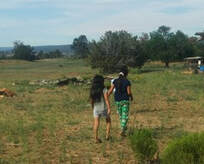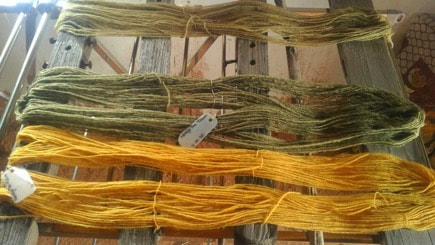Sue V. BegayWeaving BFA Student, American Indian College Fund Indigenous Visionaries Winter 2021 Fellow
Never once did I think that one day I would be amongst them as an artist. Well, it happened this year. With the encouragement from the Navajo Cultural Arts Program, my Visionaries' mentor, and one of my weaving mentors, Tahnibaa Nataanii, I completed the Heard Guild and Indian Market's application and submitted it. The application process was pretty simple – to be considered I submitted my art descriptions, pictures and paid an application fee. The hard part was waiting to hear if my art was accepted. The anticipation to receive word back as to whether or not I was accepted, waitlisted or rejected was almost too much...I didn't know if I would get it. It takes artists YEARs to get it.... but it came! I was accepted! Sue V. Begay from Dennehotso, Arizona got a spot at the Heard Museum! After I accepted and paid my booth fee, my thoughts were on how exciting and honored it was going to be placed among the super famous artists. Seriously though – Tahnibaa Nataanii, Lynda Pete, Barbara Teller Ornelas – they are my teachers, my friends and I was going to have our work shown next to theirs! I was happy to be amongst them even though it was a virtual experience.
I was elated to sell two of my three weaving pieces. The personal experience is self-achieving with lots of support and encouragement from your peers. If it were not for the support of Diné College programs I would not have had the opportunity to shine with the superstars.
I look forward to submitting again next year. I'll have to apply again and I am sure it will be an entirely unique experience to be selling there in person. A few pieces of advice that I have for my fellow emerging Navajo artists about entering into shows like the Heard Indian Market is:
The pictorial raised edge with an eagle design pillow shown below is one of my items that sold at The Heard.
2 Comments
Tammy MartinNavajo Weaving BFA Student, American Indian College Fund Indigenous Visionaries Fellow
She was very happy with her sale because she got to keep the money. This money allowed her to buy graduation items she thought she wouldn’t be able to afford. She went on to attended Navajo Community College (now Diné College) and earned a certificate. She uprooted from her home area and moved to the Eastern Agency community of Crownpoint. It was here that she worked at Indian Health Services, the Navajo Nation Police Department, the Office of Vital Statistics, and Crownpoint Community School. She had married, had a family and a place to call home. Weaving became therapy because she soon found herself a victim to domestic violence. Two years after filing for divorce, her oldest daughter became ill with leukemia and passed away in April. During these trying times weaving de-stressed her and provided an extra income. Five years later, she married Kenneth Begay, a big supporter of Gloria and his stepchildren.
When teaching her students, she tells them to research other well known weavers and their textiles such as Roy Kady, sisters Barbara and Lynda Teller, Gilbert Nez-Begay, and Kevin Aspaas; they all have their own story for weaving, their styles are what makes them recognizable, even from a glance. She says “the more you learn about other weavers, the more you know about yourself and you can create your own style”. Learn your language, even if you know just a few words, you identify yourself as a Diné person; to learn that being Diné is unique. “No one can take that identity from you”. That is something that a lot of our youth are dealing with, they may feel embarrassed to speak it because they might get shamed for speaking; it should be that way, we should be encouraging all the youth to speak our language. The last is something that she recalls her mother sternly telling her “You have ten fingers, those ten fingers are given to you so that you can take care of yourself; work with your hands”. This was not just a saying, it is the Diné philosophy of self determination or T’aa Awoli Bee. I recall my own grandmother saying that whatever you want or desire is at the very tip of your fingers, it's up to you to make the rest of the hand, mind and body to work to earn it. Sometimes, we take for granted how much work you put into something has its own rewards, or sense of accomplishment. We ended the interview encouraging one another to keep weaving, carding, spinning, and learning. In Gloria’s words “Weaving is a non-stop learning process”. Download the full recap of Tammy's interview with Gloria here:
Sue V. BegayNavajo Weaving BFA Student, CA315 Wool Processing II
I prepared the black walnut skin with a pre-soaking. Pre-soaking is required because the black walnut is very hard. I had my black walnut soaking for one day and one night. I prepared the labels on the skein and wet the weft. For this project, I used heather gray and blanche white from Brown Sheep Company along side some of my hand spun wool. After my skeins and weft were labelled, I dipped them in the prepared boiling pots of water. The water I used is from the unconfined aquifer water from Narrow Canyon. All the dyeing is done with unconfined aquifer water. I repeated the same process for the yellow skin onions- although I did not have to pre-soak. For each dye, I made two groups: one set made with alum and another set without alum.
My experience with dyeing with yellow onion skin and black walnut was very exciting. The colors of the weft are gorgeous with both yellow onion skin and black walnut. I learned about the slight various of natural plants as well as the differences using machine spun vs hand spun wool. Ultimately, what my major take away this week is that the beauty and gorgeous colors that comes from Mother Earth are treasures. Watching how the color comes alive. 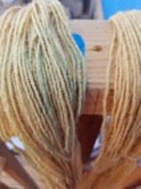 UGG - My fault - Sorry, wool! UGG - My fault - Sorry, wool! Here are some other practical take aways I learned this past week: Lesson Learned: The wool is still very hot even after two baths. Lesson Learned: Never mix a pre-dyed skein with your skein you wish to color. Lesson Learned: Be patient and let the colors work. BIG Lesson Learned: This is what not to do. I put in a white skein and put a sky-blue skein on top of it and the color transferred onto the white skein. I can still use this in my pictorial rug as a corn tassel or streaks in the skyline. One of a kind weft. I am very honored to be in this class even though we are distance learning. It was absolute great day of hands on activities and I am looking forward to another great lesson. But for now...I saved some of my black walnut and I'll be testing it out with some Navajo churro raw wool. Tamerra MartinNavajo Weaving BFA Student: CA315 Wool Processing II
In preparation of dying wool, I found it interesting that it was encouraged to recycle or repurpose materials. There’s really no need to go and purchase everything new. You just have to look around and see what you could use. A metal basket with bailing wire could be turned into a strainer or empty water/milk jugs could be used to make tags to label your skeins.
Once the tea was ready; we added the unbleached white wool and the heather gray wool...the colors that came from the first dye bath were very subdued. The second dye bath, when the alum mordant was added, the colors was very bright! The first dye lesson was a success! When seeing the colors that developed from this lesson, I couldn’t help but think about the many other plants on the land that serve a purpose. Whether it was a natural remedy for an ailment, or an essential item for a ceremonial reason or a utilitarian item; these plants served a purpose. I am very honored to be learning these ways and that I can share this with my helpers. We are already looking forward to the next plant dye session.
If you are interested in joining the Navajo Weaving BFA program in the fall, be sure to get in contact with Christine Ami (cmami@dinecollege.edu) or Crystal Littleben (cclittleben@dinecollege.edu). It's a one of a kind program - only offered here at Diné College! |
Categories
All
Archives
October 2021
|
||||||||||||||||||||||
SocialsALL PHOTOS IMAGES ARE COPYRIGHT PROTECTED. PHOTO IMAGES USE IS SUBJECT TO PERMISSION BY THE NAVAJO CULTURAL ARTS PROGRAM. NO FORM OF REPRODUCTION IS PERMITTED WITHOUT WRITTEN PERMISSION FROM THE NAVAJO CULTURAL ARTS PROGRAM. |
Featured Pages |

